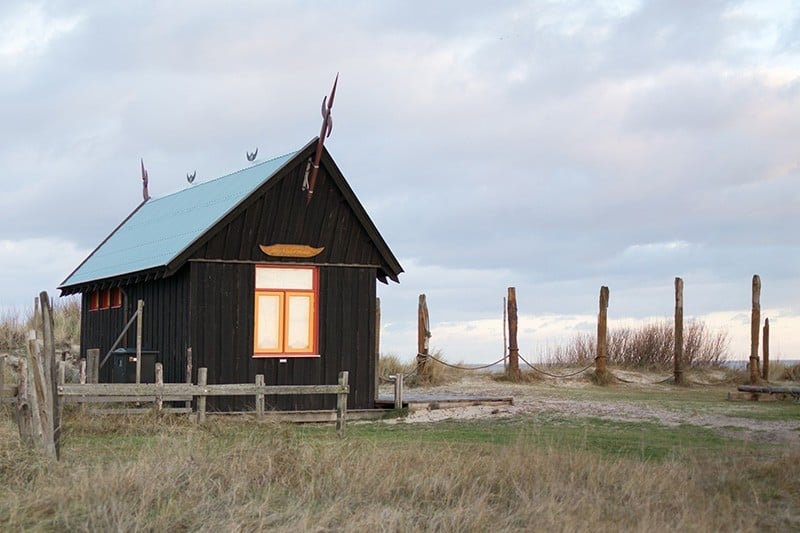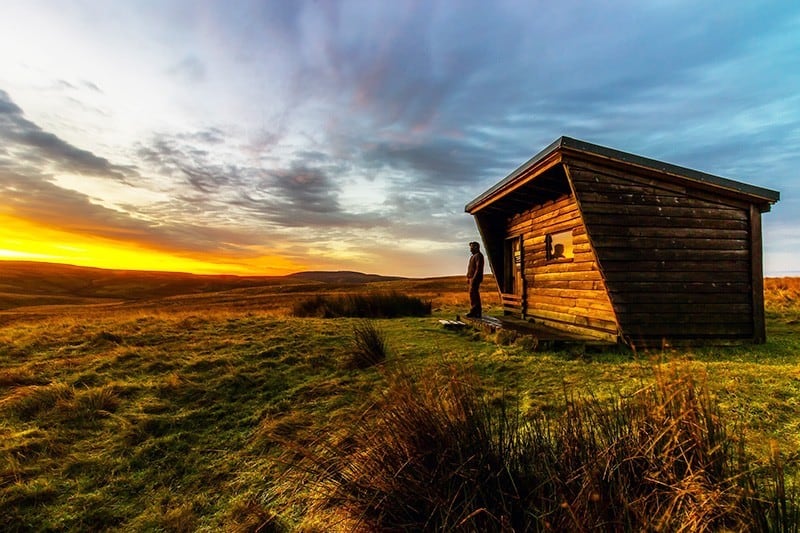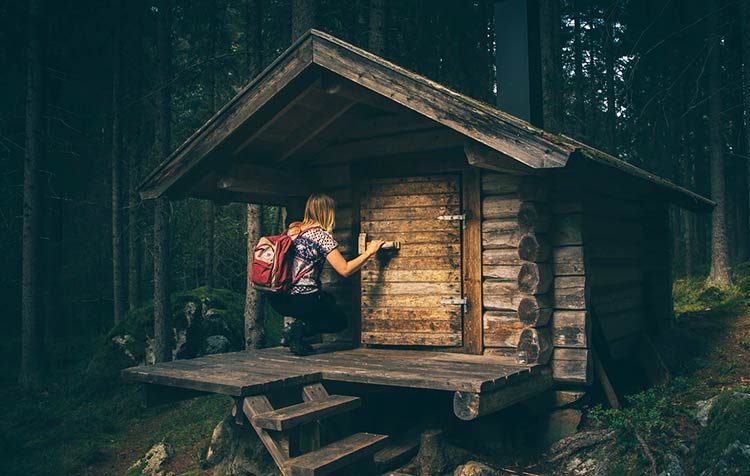What are Tiny Houses and what exactly is the Tiny House movement all about? The idea of the Tiny House movement is simple. You reduce and simplify your possessions to the most essential and focus instead of a capitalistic life rather on the really important things in life. But can it work to lead an unrestricted, complete life in the smallest space in the long term?
In this article, I'll answer that question for you and show you all about the Tiny House movement.
The Tiny House movement means reduce

This Reduce his belongings is also called downsizing and goes hand in hand with a more sustainable and cost-effective lifestyle. So besides the trademark tiny houses, the Tiny House movement is much more about a mindset of a simpler, more focused life.
Life in Tiny Houses could not be more individual: because not only the furnishings of the Tiny Houses are often unique and tailored exactly to the living space. No, the Tiny Houses also come from the outside in the most diverse looks!
Because the living space here does not necessarily have to be limited by four walls! Just as popular as small, transportable huts, are also converted caravans, containers or yurts as a small home.
However, the highly individualized living concept also brings its stumbling blocks: mobile Tiny Houses in particular require a customized solution to supply the residents with water and electricity, making self-sufficient living possible in the first place. In some cases, for example, rainwater is collected and filtered, or photovoltaic cells provide the necessary electricity. Once the crises of construction and a parking space have been overcome, you are largely independent with your Tiny House and can set it up anywhere.
Tiny Houses? There is to know

There is no such thing as minimum dimensions to belong to the Tiny House movement. After all, when do you call a house small and when do you call it big? However, small can be seen in relation to the typical German house: a 0815 "normal-sized" house usually has an area of about 240 square meters. With a Tiny House, on the other hand, one limits oneself to an Living space from 10 to 40 square meters. Therefore, the Tiny House can be safely assigned to the minimalist life Assign.
Living in such a small space undoubtedly requires sacrifice. However, the Tiny House movement offers hope to all those who are already suffering from rising rents in German cities. Because Tiny houses create a solution for every budget. Prefabricated modular houses without finishing touches are nowadays already available for purchase for 5000 euros. Those who are taken with the tiny house movement, but do not need to save money, can also find luxury in Tiny Houses. There are even systems that allow individual Tiny Houses to be "assembled". Nevertheless, luxury is usually rather not the focus of Tiny Houses, often one rather relies on large glass surfaces at Tiny Homes, which make the environment the jewel of the home.
So even if the price sounds tempting at first, real Tiny House devotees want to experience the movement! Limit yourself to the bare necessities, learn to be happy with little. So rather find yourself and develop further, instead of living renunciation.
Sustainability of Tiny Houses
The sustainability of Tiny Houses is often one of the most popular reasons for choosing a Tiny House, in addition to the relatively "low" costs. Therefore, innovative and particularly resource-saving solutions for water, energy and power supply are always an important issue for many Tiny Home owners. Thus, the decision for a Tiny House often also has an ecological and social awareness as a background. As a rule, natural materials and renewable raw materials are already predominantly used in the construction of the tiny houses. Those who want to save costs also often rely on materials that have already had a life. Discarded shutters, old school desks or barn floorboards can add a certain charm to a new Tiny House!
Thanks to the very small living size of Tiny Houses, the energy balance of the houses is above average, especially compared to normal houses. The same also applies
for electricity consumption. A large proportion of energy consumption can often be generated by solar panels on the roofs of Tiny Houses. In addition, thanks to the size of the house, one consumes less energy. Because not only is there less space to light, but you usually reduce the amount of your electrical appliances even before you move into a Tiny House.
Often Tiny House owners rely on composting toilets in their homes. These reduce water consumption by 30% compared to the normal fresh water toilet. Often, running water in Tiny Homes is only feasible through a built-in water tank. Thus, the water tank needs to be refilled regularly, but this makes for a more conscious and economical use of water. Especially since the water tank replacement always shows you how much water you use in what time.
Rules of use for a Tiny House in Germany

Now we come to one of the most exciting points: How does the German legal jungle view the tiny house movement? As you can probably already guess, setting up Tiny Houses in Germany is not seen as casually as in the home of the movement, the land of infinite possibilities, the USA. There, the Tiny House movement has developed as a sort of countermovement to the "bigger is better" mentality. In this country, there are strict rules regarding the size, weight and location of Tiny Houses.
The built-up trailers may not exceed a height of 4 meters, for example, and a width of 2.55 meters and a length of 7 meters must also be adhered to in order to still pass as a trailer with special construction. The chassis may weigh a maximum of 3.5 tons in order to be considered roadworthy by the TÜV. These requirements can only be ignored by those who do not want to keep their Tiny House mobile.
Tiny Homes with a permanent residence, on the other hand, require a building permit and specially designated building areas. Thus, already during the planning of the Tiny Homes plans should be available, how electricity, water, sewage disposal and garbage are ensured
be. Without a building permit, the installation is possible only temporarily on campsites.
Who moves into a Tiny House?
The movement is also attracting more and more interested people in Germany. If you analyze the members of the movement, they mostly come from the educated middle class, environment and independence are important to them. Thus one finds from students, over young small families up to physicians the most different representatives of the Tiny House Movements. They decide to live in a small area voluntarily, because it corresponds to their ethical ideas and not because of financial need.
Do you have any questions, tips or suggestions about the article or the Tiny House movement? Of course, I also look forward to your comments under this article.
Best regards,

PS.: Have a look at the Minimalism Blog by and let yourself be inspired even further.






